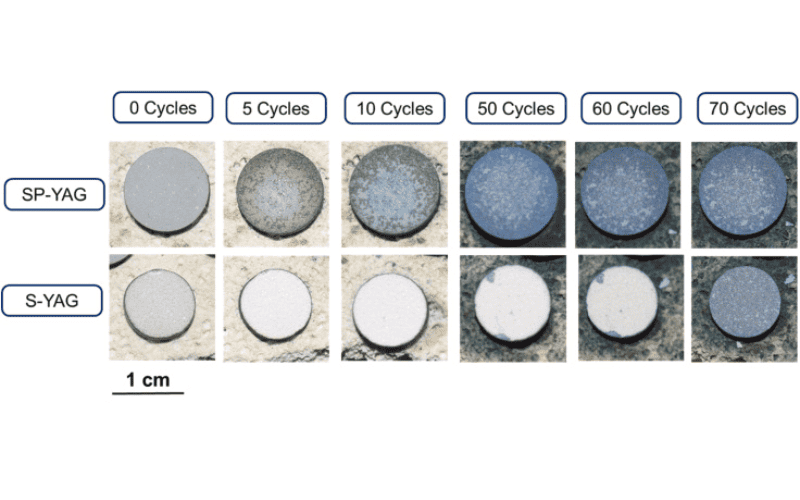September 1, 2021
YAG Thermal Barrier Coatings Deposited by Suspension and Solution Precursor Thermal Spray
Yttrium aluminium garnet (YAG) is a promising topcoat material for thermal barrier coatings due to its high temperature stability and better CMAS (calcium-magnesium-alumino-silicate) resistance. YAG topcoats were deposited by suspension and solution precursor high-velocity oxy-fuel (HVOF) thermal spray. The relationships between processing, microstructure and final properties were studied through a range of characterization techniques and thermal cycling tests. The microstructure of the as-sprayed YAG topcoat from stoichiometric solution precursor (SP-YAG) had distributed pores and inter-splat boundaries, while the as-sprayed topcoat produced from suspension (S-YAG) had vertical and branched micro cracks, pores, and inter-splat boundaries. Both as-sprayed coatings were composed of amorphous phase, hexagonal yttrium aluminium perovskite (YAP) and cubic YAG. In thermal cycling tests, 20% of SP-YAG failure was reached after the 10th cycle; whereas, S-YAG reached the failure criteria between the 60th and 70th cycle. The failure of both the SP-YAG and the S-YAG topcoats occurred due to thermal stresses during the thermal cycling.
Keywords: YAG phase Transition, New generation-TBC, SHVOF, Single splat
Originally published at Ceramics International (Volume 47, Issue 17, 1 September 2021, Pages 23803-23813)
By T.A. Owoseni, A. Rincon Romero, Z. Pala, F. Venturi, E.H. Lester, D.M. Grant, T. Hussain
